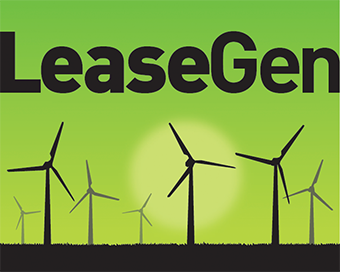Wind Lease Revenue Considerations – Future Wind Power Price Drops?
A noteworthy report has been published related to future wind power costs. The report is a summary of an expert elicitation on wind power costs prepared by Lawrence Berkeley National Laboratory.
Based on 2014 costs, the results of the survey forecast the levelized cost of wind energy may drop by 24-30% by 2030 and by 35-41% by 2050.
While these dates are 14 to 34 years away, this is generally within the term of wind leases now being presented for execution and within the term of many wind leases now in place. (With one exception, all wind leases we have reviewed in the last twelve months have had a term (extensions included) of 40-60 years.) Moreover, these drops would occur incrementally over time, therefore having some effect on all projects built over the next one to 34 years.
For most landowners, lower costs may be significant, because most wind leases include a royalty-based compensation mechanism that is tied to the price of the power sold. To the extent the drop in costs results in lower wind power prices, then the royalty to these landowners will be lower, as well. And this reduced royalty will affect revenue and the overall value of the wind lease.
There are many other considerations to keep in mind related to lower costs, two of which come to mind, immediately.
- Part of what makes up the forecast overall drop in levelized costs in the report is increased production. And under a general royalty structure, increased production means greater revenue (although at a lower price). This greater production would not make up for all that is lost in a royalty due to a 20% drop in power prices, but it will shave some of that difference.
- Possibly more significant would be the elimination of federal incentives. If wind power prices fall considerably, then there is a stronger argument for the elimination (or maybe better said “non-renewal”) of federal incentives. Current wind power pricing depends on available tax credits and depreciation. Without these incentives, presumably wind power prices would have to increase (especially for new projects) for project owners to realize their required returns, and this could eliminate much (if not all or more) of the negative effect of reduced costs on royalties.
Whether production increases or whether incentives are eliminated, as well as whether wind power prices will fall, and the effect of natural gas and solar pricing, … are all speculations. This is not to say the recent report should be disregarded. To the contrary, it should be considered, because it shows factors that may bear on wind lease revenue and that thus affect wind lease value.
The report is especially meaningful for landowners now looking at new leases. LeaseGen has been consulting on new wind leases in different areas of the Country (and internationally) relative to lease economics. Some developers (really one in particular we have seen in 2016 and one other in 2015) seem to have adjusted their overall lease economic structures in a way that accounts for lower power prices. What matters to the landowner is modeling these economics considering prospective pricing and production, to be sure the projected revenue is adequate. Too often, it seems, landowners and their advisors rely on “what the neighbor is making.” Power prices have already fallen too much for this approach to make any sense. Instead, a considered approach is required, looking at royalty percentages considering power prices and potential production, as well as alternative compensation mechanisms.
http://phys.org/news/2016-09-tools-future-power.html#i-66E1BCEF-A610-4C3A-88EA-8B388F81D474
